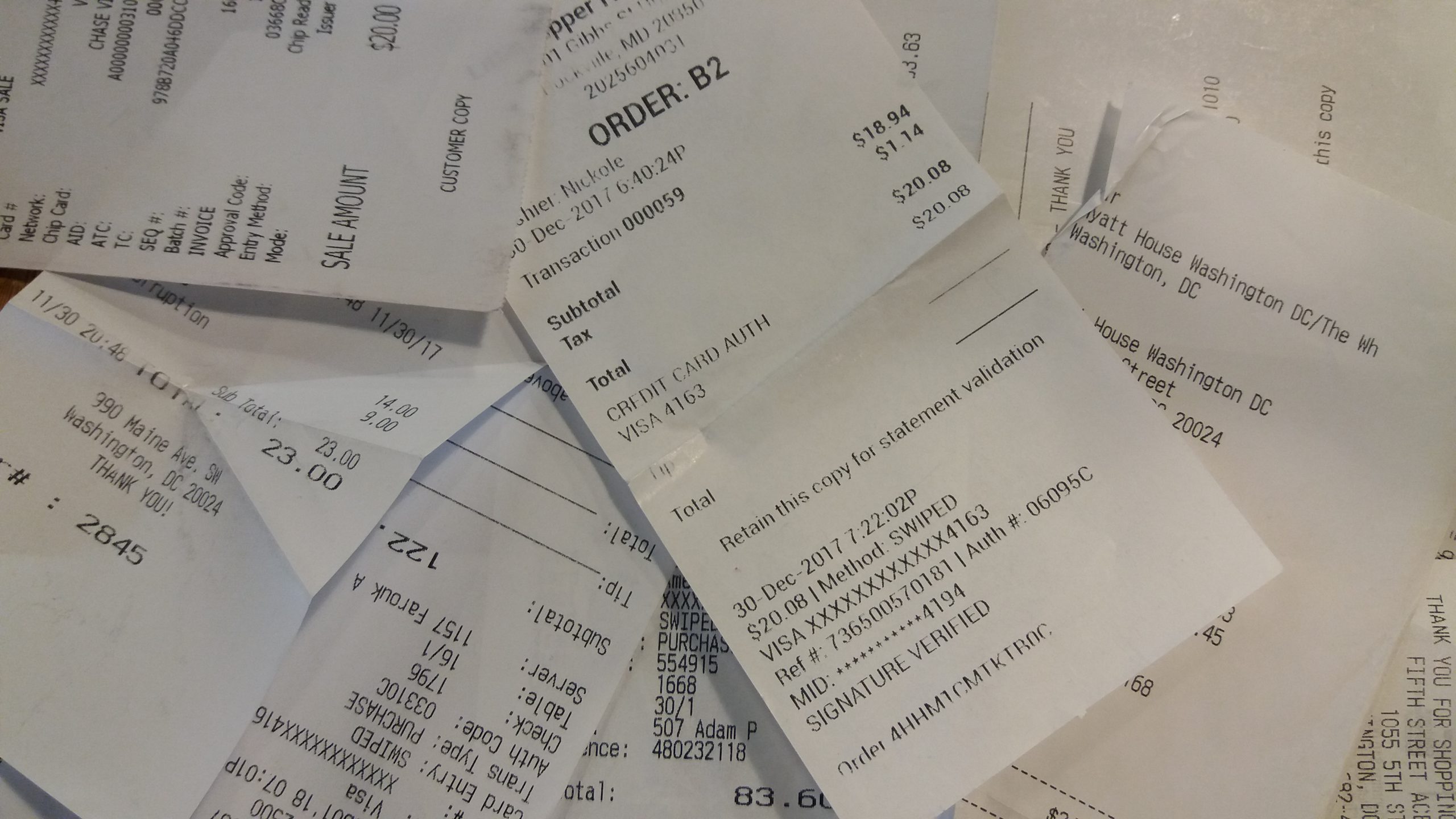You’ve probably heard about BPA in hard plastic water bottles and we’ve told you about BPA in the linings of food cans. It’s been banned from some children’s products like baby bottles and sippy cups in the US. But did you know that after touching a single receipt, these chemicals can enter your bloodstream within minutes?
Toxic-Free Future published a study in 2010 that found roughly half of cash register receipts contain BPA, and almost all paper currency was contaminated with the chemical. This study also indicates that skin absorption from thermal paper receipts with unbound BPA may lead to exposure at levels equivalent to exposure from food sources.
And, a 2018 report by our partners at HealthyStuff.org also exposes the dangers of toxic receipts: they found toxic BPA or its chemical cousin BPS in 93% of the receipts tested.
What’s the problem with BPA and BPS?
These chemicals are endocrine disruptors that mimic hormones like estrogen and thyroid hormone, disrupting the body’s normal functioning. Studies have found links between BPA exposure and numerous health problems like breast cancer, prostate cancer, diabetes, and obesity.
Unlike some chemicals that are only toxic at certain doses, scientists have found that even low doses of these chemicals can impact fetal development and may contribute to reproductive impairment, ADHD, autism and other health problems. The most common replacement chemical for BPA in receipt paper, BPS, and emerging science suggests it may be just as bad as BPA. It’s a classic case of a “regrettable substitute.”
What happens when you handle a toxic receipt?
In receipt paper known as “thermal paper” because of the way the ink develops, BPA and BPS are added in their free form without being bound to the paper or polymerized. So the chemicals can easily transfer to anything a receipt touches—your hand, the money in your wallet or even the groceries in your shopping bag. Several studies have found that handling receipts, even briefly, leads to significant BPA or BPS absorption into the body.
And this type of “thermal paper” isn’t limited to receipts—it’s also used for movie and concert tickets, boarding passes and deli meat and cheese labels. It’s pretty hard to avoid. And studies have found that the body absorbs more BPA when thermal paper is handled with moist or greasy fingers. Using hand sanitizer and hand creams can make the body absorb BPA much more rapidly.
While virtually every person who has been tested has had BPA and BPS in their bodies, cashiers and other workers who handle thermal paper have more of these chemicals in their body than the rest of us. The fetuses of pregnant workers who handle toxic receipts may be the most vulnerable to exposure.
Are there alternatives?
Yes! The easiest alternative is for retailers to offer digital receipts.
But, when that’s not an option, retailers can use a replacement paper with a phenol-free developer. Best Buy has been doing this for a few years now.
What some retailers are doing
More and more retailers are listening! Less than two months after Trader Joe’s received one of the lowest scores in our Retailer Report Card, the company has just committed to phasing out the use of these bisphenol chemicals in receipts! The company made this commitment knowing that the Ecology Center’s HealthyStuff.org project was releasing the report. Bloomberg broke the story:
“We are now pursuing receipt paper that is free of phenol chemicals (including BPA and BPS), which we will be rolling out to all stores as soon as possible,” the company said in a statement.
The Ecology Center sent a letter to Trader Joe’s informing them of its findings before the report’s release.
This shows the power our movement has to make change!
We congratulate Trader Joe’s for taking these steps and hope the company won’t stop there. We’d like to see Trader Joes take the next step and adopt a robust safer chemicals policy!
So what can YOU do?
- Tell retailers that you want them to switch to phenol-free receipt paper and release a comprehensive safer chemicals policy, if they haven’t already. Change happens when we ask for it! So check to see if your favorite stores were covered in the study and whether they were graded in our report card, then send them a message or give them a call. Here’s a sample:
I’ve learned that the receipt paper used at some stores is coated with BPA or BPS, known hormone-disrupting chemicals. They can be absorbed through the skin, disproportionately affecting cashiers. You should use BPS- and BPA-free paper and offer electronic receipts. This change should be a part of a comprehensive chemical policy to protect employees and customers from toxic chemicals.
Based on our 2021 Retailer Report Card results, 12 companies earned failing grades. An easy action to take would be to use this form to tell these “hall of shame” retailers to protect customers from toxic chemicals!
- Ask for digital receipts. Many retailers, including Whole Foods and CVS, offer digital receipt programs. By opting out of a paper receipt, you can reduce your exposure, your cashier’s exposure and the amount of BPA and BPS that are manufactured. If you have to take a receipt, fold it printed side in—the back of the paper is usually not coated.
- Don’t throw receipts in the recycle bin! While the HealthyStuff.org study found that a handful of retailers are using uncoated paper, chances are that most receipts you receive are coated with BPA or BPS. Recycling receipts can contaminate other products downstream like toilet paper and paper towels made from recycled content. Yuck!





